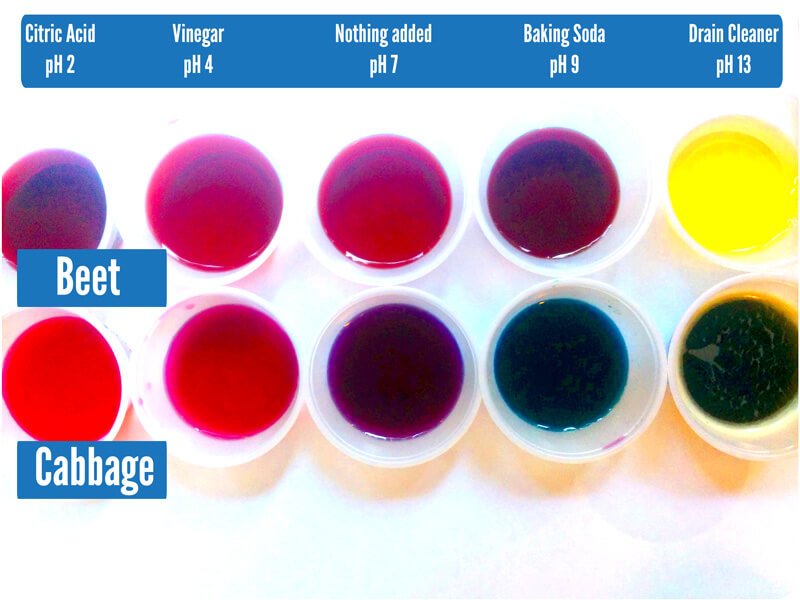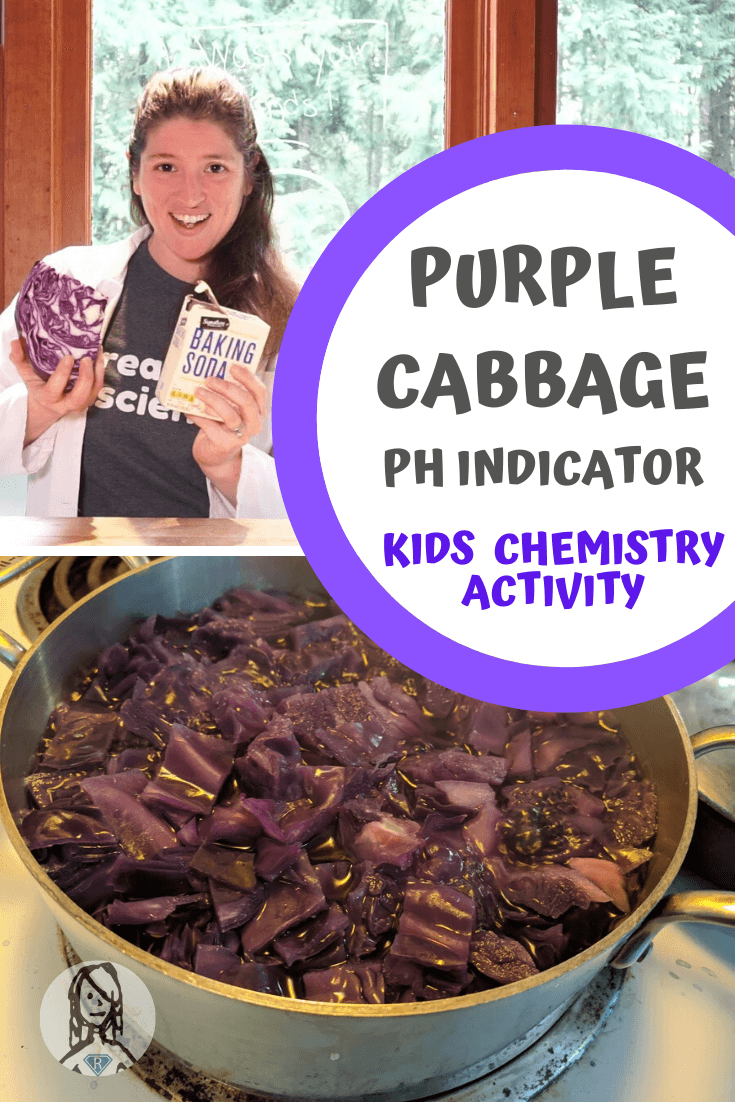
Natural pH indicators: Cabbage vs. Beets
Learn how to make your own natural PH indicators and the difference between using cabbage or beets as your indicator liquid! Plus its a ton of fun to see the colors change, great for little kids.
Project Ingredients:
- Beetroot juice and/or purple cabbage juice
- pH paper (as a control)
- Small pipettes
- Sample cups

First things first, how to make a pH indicator with beetroot:
It’s easy! Just boil the beets in water for 30-60 minutes.
The purple water acts as a natural pH indicator using beetroot! You can, of course, blend in mashed beets and filter out the beet flesh if you want a darker fluid, but just beets boiled in water works great. You can also purchase beetroot juice that will work straight from the bottle!
How to make a pH indicator with purple cabbage:
Similar to making the beetroot indicator, you’ll need to cut up the purple cabbage and boil it for 30-60 minutes. Yet again, the purple liquid will act as a natural pH indicator!
How well do beets work as a natural pH indicator?

Looking at natural pH indicators is a fun way to bring chemistry home. Kids will enjoy mixing and testing all sorts of household items. We got pH paper, little pipettes, and sample cups to make the activity that much more fun. You can also use the pH paper to check your results! You can see our beetroot pH color table and cabbage pH color table below.
Beets, blackberries, grape juice, plums, turnip skin, and more all act as an edible natural pH indicator.
They all have anthocyanin in them which makes the solution change color, but they also differ in that little side groups attached to the main molecule cause the color changes to vary between foods. We talked a lot about how the chemical structure of anthocyanin changes the color of the solution in our post about purple cabbage as a natural pH indicator.
You should also check out our post explaining what is a pH indicator.

I took a look at beet juice (on the top row) and compared it to our control of red cabbage (bottom).
The beets did a great job detecting our very basic drain cleaner which turned it yellow, but the color changes between baking soda and citric acid are difficult to see. The solution was mainly a purplish red the whole time.
This doesn’t bode well if you are looking to test the acidity of a substance more finely than just pH 13 and pH<13!
The purple cabbage lab, of course, went through a variety of colors. Dark green and brown for the drain cleaner, purple-blue for baking soda, purple with water, pink with vinegar and red with citric acid. This gives us a much better idea of an actual pH value when testing things. Of course, if you are just looking to test extreme bases, the beet juice would work just as well!
You can also compare your tests to pH paper dipped in the various solutions as a guide.
Purple cabbages are as easy to find at the store as beetroot, so while you can make a pH indicator using beetroot, I suggest using purple cabbage instead as you get a better range of distinct colors as the pH changes.
It was so much fun comparing these two natural pH indicators, I can’t wait until blackberry season hits so we can do it again with blackberry juice! What natural pH indicators do you want to try?
Natural pH indicators:
- Purple cabbage
- Beets
- Blackberries
- Blueberries
- Tumeric
- Cranberries
Update: We got around to using crushed blackberries which do change color, but do not have nearly as good of a range as beets or red cabbage. We have also tried cranberry juice which is great to use as a secret invisible ink revealer. And lastly, during a bout of the plague in our house, we were drinking a ton of turmeric tea. At one point when I added some lemon juice to the tea it completely changed color, which was a really fun way to talk about this project and the chemistry of acids and bases once again!
Try testing some other natural pH indicators with your kids and find your favorite! Make sure to send us your photos of your fun science projects as you become STEM Explorers! You can download our Cabbage pH lab book below for FREE to get a taste of our approach to homeschool science curriculum. We also have tons of free mini maker activities and premium labs to fill up your days with hands-on, inquiry-based STEM learning!

Hey Erica, it’s Fanny. I did the lab with Nandu and my neighbor kids today and we actually got a good yellow with drain cleaner on red cabbage juice. So I guess it’s also possible 🙂
Thanks for entertaining us on a rainy Saturday afternoon.
Nice!! We got yellow with bleach on the cabbage juice, maybe I have the less effective drain cleaner…which could be why it never works quite right!!